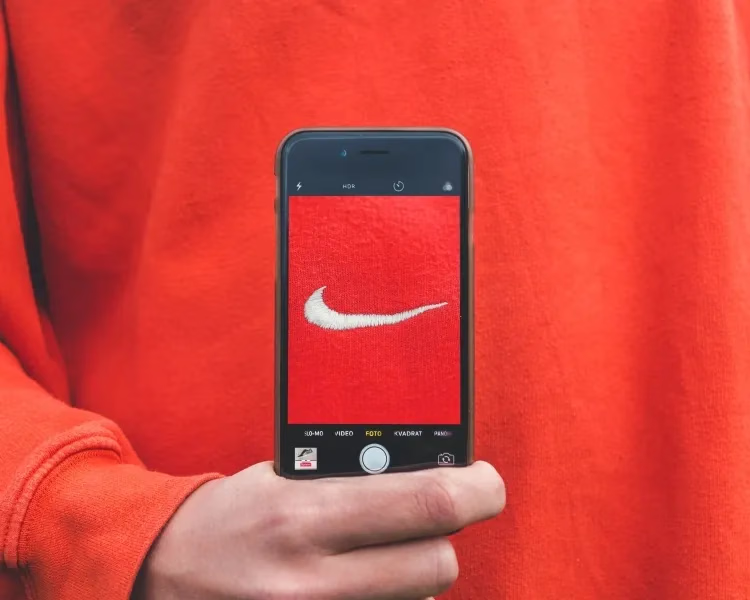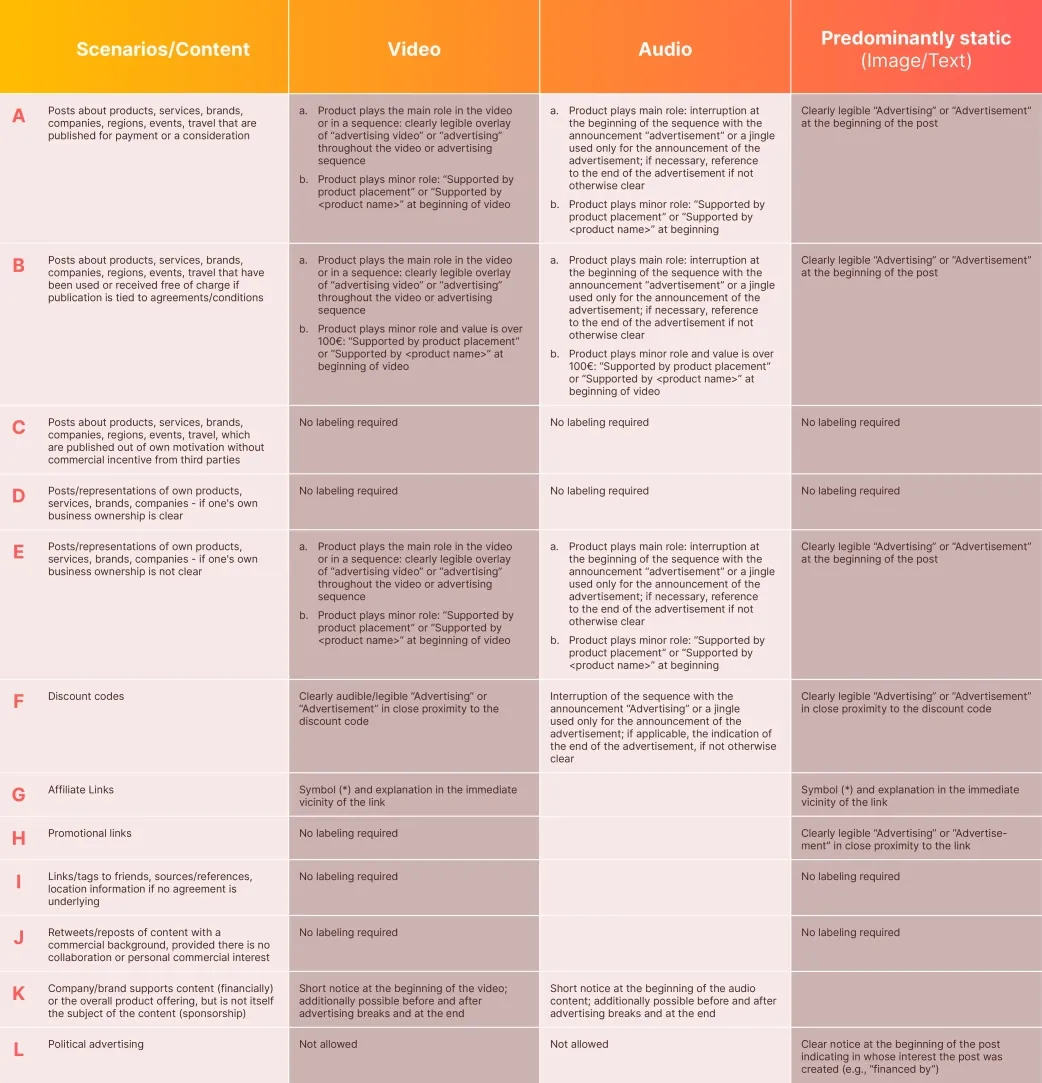
Reading time: 5 minutes
Advertising correctly – How You Properly Handle Advertising Labeling
By Sarah Emmerich
This year, I have often been asked whether influencer marketing has now grown out of its infancy. Has it become established and standardized? There is certainly one area where there has been greater clarity since 2021: the proper labeling of advertising in influencer marketing. The German Federal Court of Justice has finally issued a clear ruling on the matter, and a newly drafted law has been submitted by the German Cabinet. Over the past few years, there has been a lot of uncertainty among influencers and brands when it comes to dealing with the labeling of ads on social media. Many Creators came into conflict and even went to court after accusations by the German Association of Social Competition (Verband Sozialer Wettbewerb). The association ensures fair advertising and compliance with laws, including in influencer marketing. For example, posts by Cathy Hummels and Vreni Frost lacked clear labeling of advertising, which is why these posts were considered surreptitious advertising. The case involving Cathy Hummels in particular caused quite a stir, with virtually every media outlet reporting on the positive verdict for Hummels, such as the German magazine Stern in this article.
My name is Sarah Emmerich and I am a social media expert and founder of Emmerich Relations. For years, my team and I have been advising and supporting brands in influencer marketing as sparring partners and mediating between brands and influencers. In this guest post, I will summarize the status quo specifically for companies, based on the German legal basis, as to which obligations they have when working with influencers. After all, brands cannot hand over responsibility to the influencer alone when it comes to the proper labeling of advertising, and the advertising labeling obligation (Werbekennzeichnungspflicht) is not to be underestimated. With influData you can not only find a suitable Instagram, YouTube or TikTok creator, but you can also analyze which brands your influencer mentions in their profile.

Sarah Emmerich, social media expert and founder of Emmerich Relations
Proper labeling of advertisements
To cut to the chase: In influencer marketing, advertising must be easily recognizable as such and separated from editorial content. Commercial communication must be clearly marked according to the German Telemedia Act. However, this commercial communication only applies if a monetary benefit arises for the influencer, i.e. if an influencer receives consideration for a post, he or she must clearly label this as “advertising” or “advertisement”. It doesn’t matter whether it is photo or video content and on which platform the post is published. For proper advertising identification, it is sufficient to put one of the mentioned terms (“advertising” or “advertisement”) clearly recognizable at the beginning of the post. The collaboration partners, meaning the brands, are also obligated to inform the influencer about this, as otherwise both the influencer and the company can be accused of surreptitious advertising. As a brand, I should therefore also regularly check the status quo of the correct advertising labeling before collaborations and brief the influencer accordingly.
So, in order to properly assess the advertising labeling, it is important for both the influencer and the brand to analyze whether a consideration in the form of money, gifts, free services, travel or discounts has been promised or provided.
If the answer to this question is “yes”, then it is clear that the influencer’s post must clearly identify and mention the word “Advertising” or “Advertisement” at the beginning of the post so that followers are aware of the countervailing benefit.
If the answer is clearly “no” and no consideration has been provided, neither is the influencer obligated to label it as advertising, nor does the company need to be concerned.
However, there is again an exception that applies even if an influencer has not received any monetary benefit: namely, if an influencer links directly to a brand’s website or directly to a product, this is considered overly promotional and should also be labeled as advertising. A simple TapTag / brand link on Instagram, on the other hand, does not need to be tagged, for example.
As a company, it is advisable to protect yourself by creating and retaining receipts and also providing these to the influencer if a monetary benefit has been provided and thus an advertising partnership has taken place. When working with influencers, it generally makes sense to put clear agreements in writing in the form of emails and briefings. In such briefings, the reference to the proper labeling of advertising should always be included, so that the company is covered in case of doubt. Because in the event of a breach of the labeling requirements, the advertising companies are also liable. A fine may be imposed – and this can be up to 500,000 Euros.
On the other hand, for influencers it is worth keeping the receipts of self-paid products in order to be able to prove that the products were not sponsored in case of doubt.
It is also good to know that the labeling obligation applies to both photos and videos, that is, to any posting format – but the type of labeling requirement differs.
To help influencers and brands, it’s worth downloading a free copy of the State Media Authority’s Guide to Advertising Labeling for Online Media.
And if you’re struggling to find the perfect influencers for your brand, you can use the influData software to search and analyze the right Instagram, YouTube or TikTok creators based on data and their target audience.
